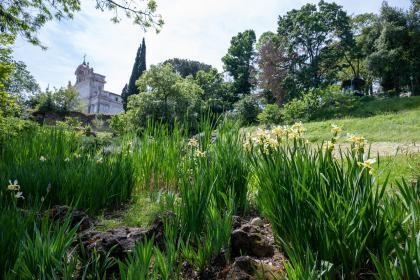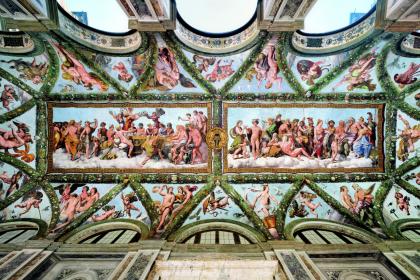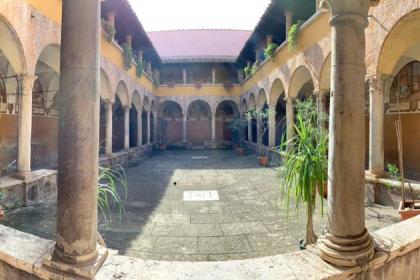
Started in the first half of the 16th century by Giulio Romano, a pupil of Raphael, for Filippo Adimari, Pope Leo X's secret chamberlain, it was purchased in 1552 by Cardinal Salviati. Cardinal Salviati's brother, Bernardo, Prior of the Order of Malta, entrusted Nanni di Baccio Bigio with the task of continuing work on the palazzo, which was completed around 1560 with the enlargement of the rear part and the construction of the internal façade. It passed to the Borghese family in 1794 and was transformed into barracks for French troops in 1849. It became the property of the Italian State in 1870, and was first the seat of the Military Court, and in 1932 of the Military College of Rome. Since 1971 it has housed the Centre for Defence Studies. The façade, divided into five parts by vertical rustication, has a central portal, also rusticated, surmounted by a balcony supported by large corbels. On the sides are large ashlar-arched windows; on the first floor are architraved windows surmounted by false square windows. The cornice is supported by corbels with lion heads.
In the chapel inside the palace, there are important 16th-century frescoes depicting the stories of the apostles, the work of Santi di Tito. The ceilings of the library contain frescoes by Annibale Brugnoli, depicting episodes from the Risorgimento wars, painted at the end of the 19th century.
El Jardín Botánico

 Condividi
Condividi
Villa Farnesina

 Condividi
Condividi
Iglesia de Sant'Onofrio al Gianicolo

 Condividi
Condividi
Informaciones
 Condividi
Condividi
Location
Para conocer todos los servicios de accesibilidad, visite la sección Roma accesible.











































